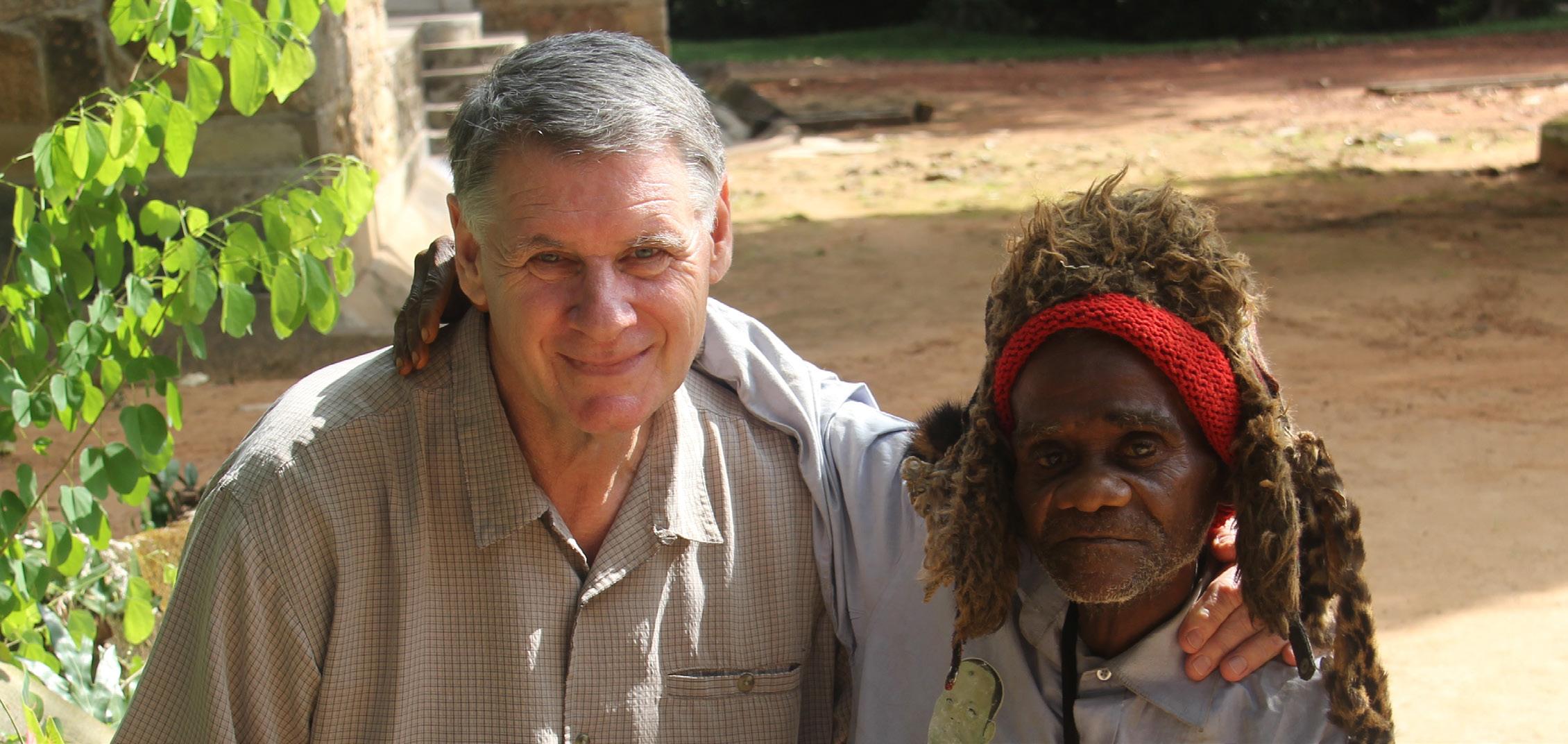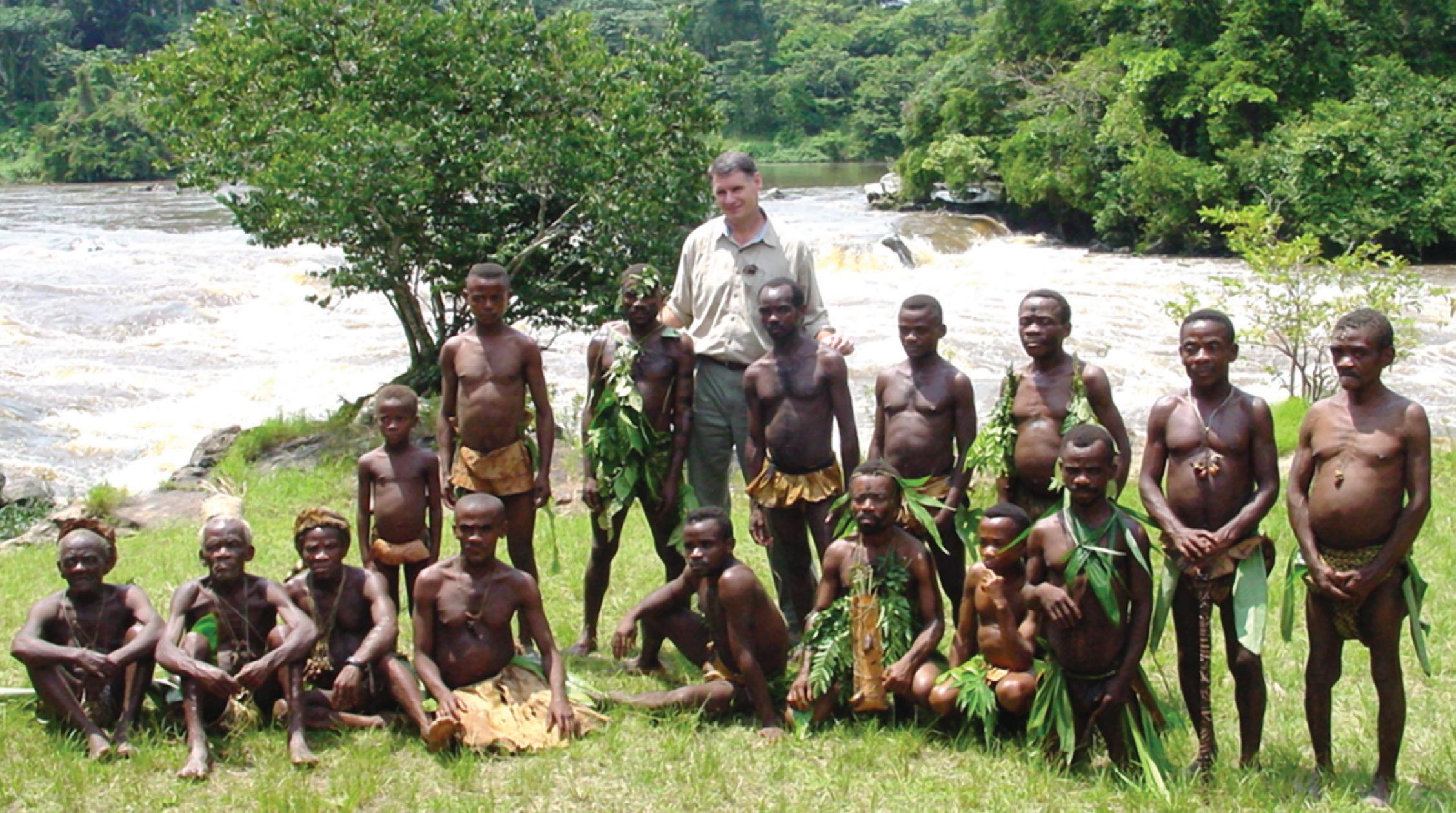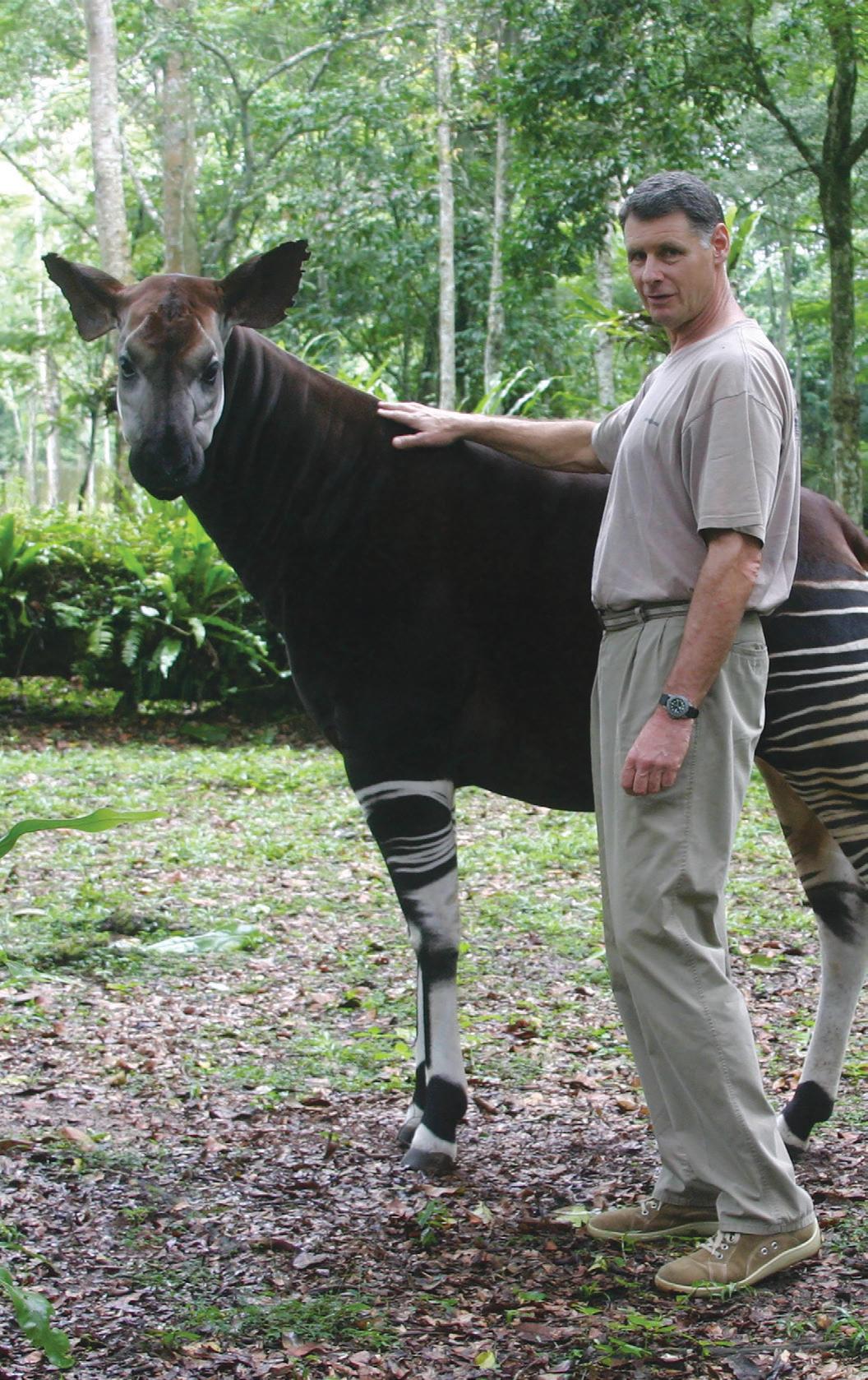
1 minute read
John Lukas
John Lukas Curator of Wildlife Conservation
How long have you worked at the Zoo?
I have worked at the Zoo for almost 10 years. What does a day in your shoes look like?
The first thing is to prioritize the work according to need. I usually respond first to emails from Democratic Republic of the Congo (DRC) or Europe regarding the Okapi Conservation Project as they are six to eight hours ahead of us. I contact my staff to review what they are working on and offer help if they need it. We support conservation projects around the world so all three of us take time to check in with a partner to see how they are doing and if they have any specific needs coming up that they might need funding to implement. That way we can plan our awards and budget for them. We use our Conservation Strategic Plan to guide our decisions on which projects to support. As time permits, I also virtually meet with the staff of the Okapi Conservation Project (OCP) to review program status in DRC and discuss areas of concern. I have led this Project for almost 36 years which has protected the largest population of okapi left in DRC. A good deal of time is spent fund raising for this project. As founder and President of the International Rhino Foundation (IRF) and board member of the Wildlife Conservation Network I respond to requests for comments on actions being considered by both organizations. I travel to oversee projects I am associated with and to attend board meetings.
I spend a good deal of time participating in meetings at the Zoo to coordinate our activities with other departments and to help support the Zoo’s mission.
What were your previous jobs/career paths and how did they lead you here?
I started my zoo career working as a night watchman at the Children’s Zoo in Boston while I was in graduate school at Northeastern University. After receiving my master’s degree in Zoology, I worked as a bird keeper for the Boston Zoological Society at the Stone Zoo. A year later I became Assistant Director of the Children’s Zoo at Franklin Park. I was always fascinated by the Pacific Northwest and after a year at the zoo I loaded up my Newfoundland dog, my 3 boa constrictors, a porcupine (I did my masters work on porcupines and had one as a pet) and a red-tailed hawk (I was an apprentice falconer) and drove to the Okanagan Game Farm in Penticton British Columbia, Canada to work as their education coordinator.
In Canada, I was exposed to wild nature on a grand scale and traveled around BC and Alberta whenever I had a chance. At the game farm I was fortunate to raise two wolves, a black bear, a grizzly bear and a cougar kitten, which gave me insight into four of the most fascinating species of carnivores in North America. My stint in Canada helped me take a position with the New York Zoological Society (now the Wildlife Conservation Society) as curator of a new off-sight breeding center for threatened species (the first of its kind) on St. Catherine’s Island off the coast of Georgia.
I began leading safaris to Africa as a Curator, which began my lifelong love of the people and wildlife of such a diverse continent. I met paper magnate Howard Gilman on a safari to Zambia where we shared a tent and a mutual passion to help wildlife. My wife and I had our first child on the Island which we shared with two other families. After six years when our daughter needed to go to school, I took a position with the Gilman Paper Co. to start the Conservation Center at White Oak Plantation north of Yulee on the St. Mary’s River. For 30 years I led the development of White Oak Conservation Center which became the premier facility for breeding endangered animals, conservation research and training of aspiring biologists. While at White Oak I developed my lifelong attachment to Okapi, rhinos and cheetahs and helped start organizations to support their survival in the wild.

When the Howard Gilman Foundation sold White Oak, my wife and I settled in Jacksonville and that is when the Zoo provided me with office space to continue my international conservation work. In 2013, Tony Vecchio asked me to become the Curator of Conservation for the Zoo. It is a pleasure to work with all the dedicated, caring and supportive people here at the Zoo.
What is your favorite animal?
The okapi is my favorite animal. I have dedicated most of my professional life to making sure okapi have a place not only in nature but also in the hearts and minds of the people living in the DRC.
What is your favorite exhibit?
Now that okapi are no longer exhibited at the Zoo, I enjoy watching the giant otters. Our commitment to conservation in Guyana is reflected in our work with this species at the Zoo and in the wild. My favorite place in the Zoo is the Asian Garden. I try to walk through the garden every day. It is so different; it’s peaceful, a place to reorganize your thoughts.
When or how did you first develop an interest in animals/the zoo world/education?
I developed a fascination with wild places by reading books by explorers and watching movies like the Swiss Family Robinson and all the Tarzan films. As a child I was always collecting turtles, frogs and praying mantis to look at and release. When I was young, I spent my summers with my grandparents in northern Massachusetts on their homestead where I was free to roam and explore, watching birds and beavers. I worked at a zoo in Hartford, Connecticut during summer breaks in college. My major in college was Biology and Vertebrate Zoology in graduate school; I wanted to learn all I could about our natural world.
Are you native to Florida? If so, where? If not, where did you grow up?
I grew up in Hartford, Connecticut. I was always interested in natural sciences and majored in Biology in college. I went to college in New Hampshire which afforded time to spend weekends in nature. Once we moved south to Georgia in 1976, we loved the wildness we found on the coast. We then moved to White Oak in 1982, and since then my wife and family have called Florida home for 43 years.
What is your favorite part of your career or what is your most memorable experience at the Zoo (or your old zoo)?
I have had so many wonderful opportunities in my life and have met so many amazing conservationists around the world. I cherish being able to breed okapi in Congo and bring three animals to the US that genetically saved the managed population. Also, memories like traveling in a plane with black rhinos from Zimbabwe when a rhino put his horn through the top of the crate a few inches short of the aluminum skin of the plane. A close call.

I am most proud of co-founding several very influential conservation organizations that are making major contributions to conserving wildlife all around the globe - International Rhino Foundation, Wildlife Conservation Network, Okapi Conservation Project and White Oak Conservation Center.

What do you like to do in your free time?
I am an avid kayaker and bird watcher. As I get older, I most enjoy spending time with my family and our dogs outdoors and interacting with our blue fronted amazon parrot, Jellybean, who has been with us for 35 years.
Please share any other comments you would like included in your article (stories, experiences, more about yourself etc.)
I travel a lot. I have been to Africa well over 120 times and each trip is a story of its own. In DRC we engage with the Mbuti pygmies to help conserve okapi in the wild. They are the smallest people on earth, and I am tall, so we present quite a contrast when we are together. Overall, working at the Zoo fills my overwhelming need to be around animals and animal people.










